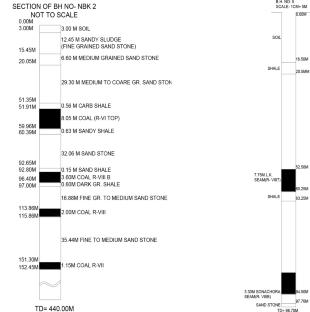Electrical Resistivity Tomography study above inaccessible old mine workings for safe erection of high voltage electricity power transmission terrestrial towers: a case study
Abstract
Old and abandoned mine workings become inaccessible with time owing to safety issues thereby demanding insight review of strata overlying such areas. Electrical Resistivity Tomography (ERT) survey was carried out at locations within Kajora area of Eastern Coalfield Limited (ECL) in Raniganj coalfield, India to assess the present strata condition for the proposed high voltage electric transmission layout. Parallel 2D ERT profiles were carried out with 20 m offset covering the study area. Considering the sensitiveness in horizontal direction i.e., identification of vertical structures, the Dipole-Dipole array methodology was implemented. The acquired data sets were filtered and processed using Prosys-II software. L-curve criteria for misfit data was used for proper interpretation of subsurface features. Non-linear least-squares regularized optimization method and 3D ERT volumetric model were performed by combining 2D ERT parallel profiles data sets for better resolution of underground old mine working and accurately map the status of mine workings. High resistivity magnitude ranging between 200 Ωm to 1600 Ωm indicated intact bedrock and solid pillar. Depillared workings area (either dry-filling or air-filled) was identified through anomalous high resistivity magnitude of more than 1600 Ωm. The data generated were also validated with underground working plan and available borehole data. Combination of 2D ERT and 3D ERT techniques against each profile was found to be effective for detection of strata condition for safe installation of terrestrial high voltage electric transmission towers.



 求助内容:
求助内容: 应助结果提醒方式:
应助结果提醒方式:


